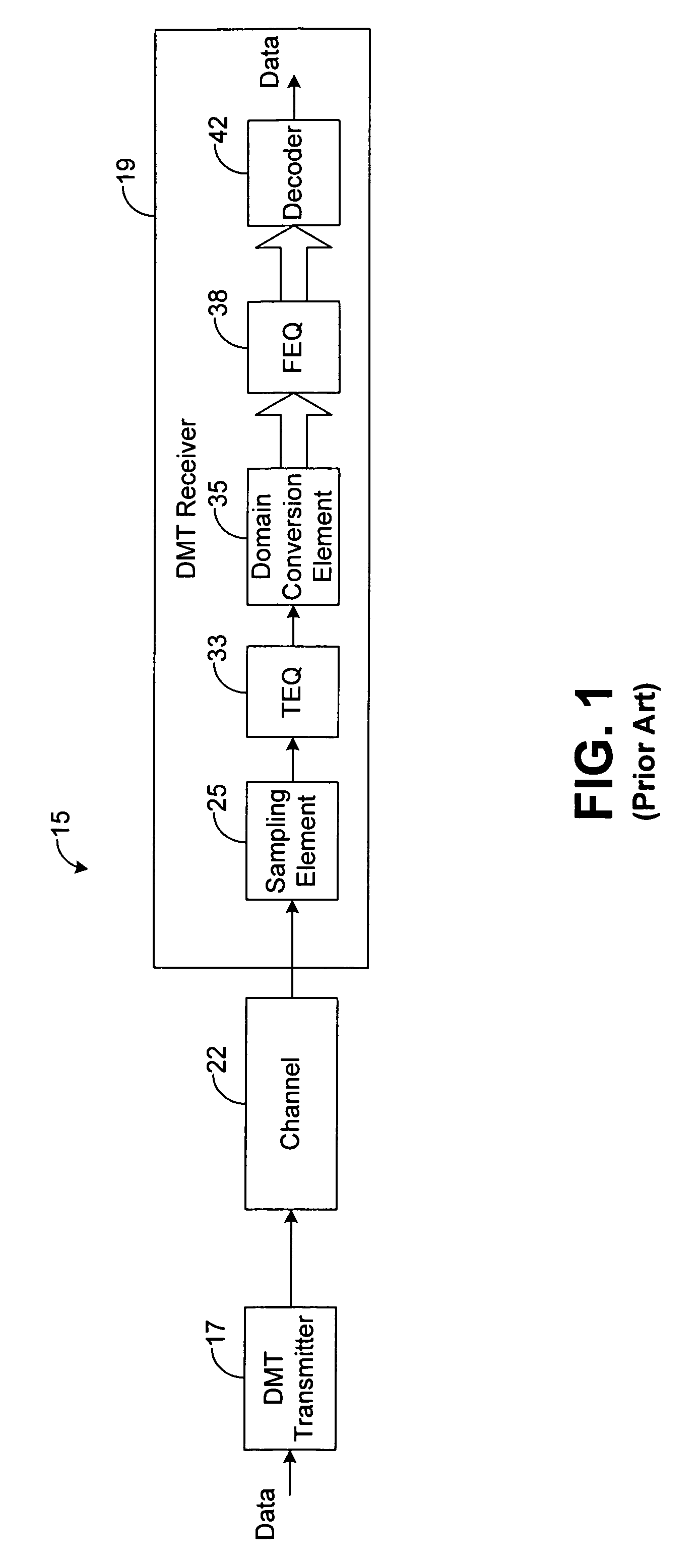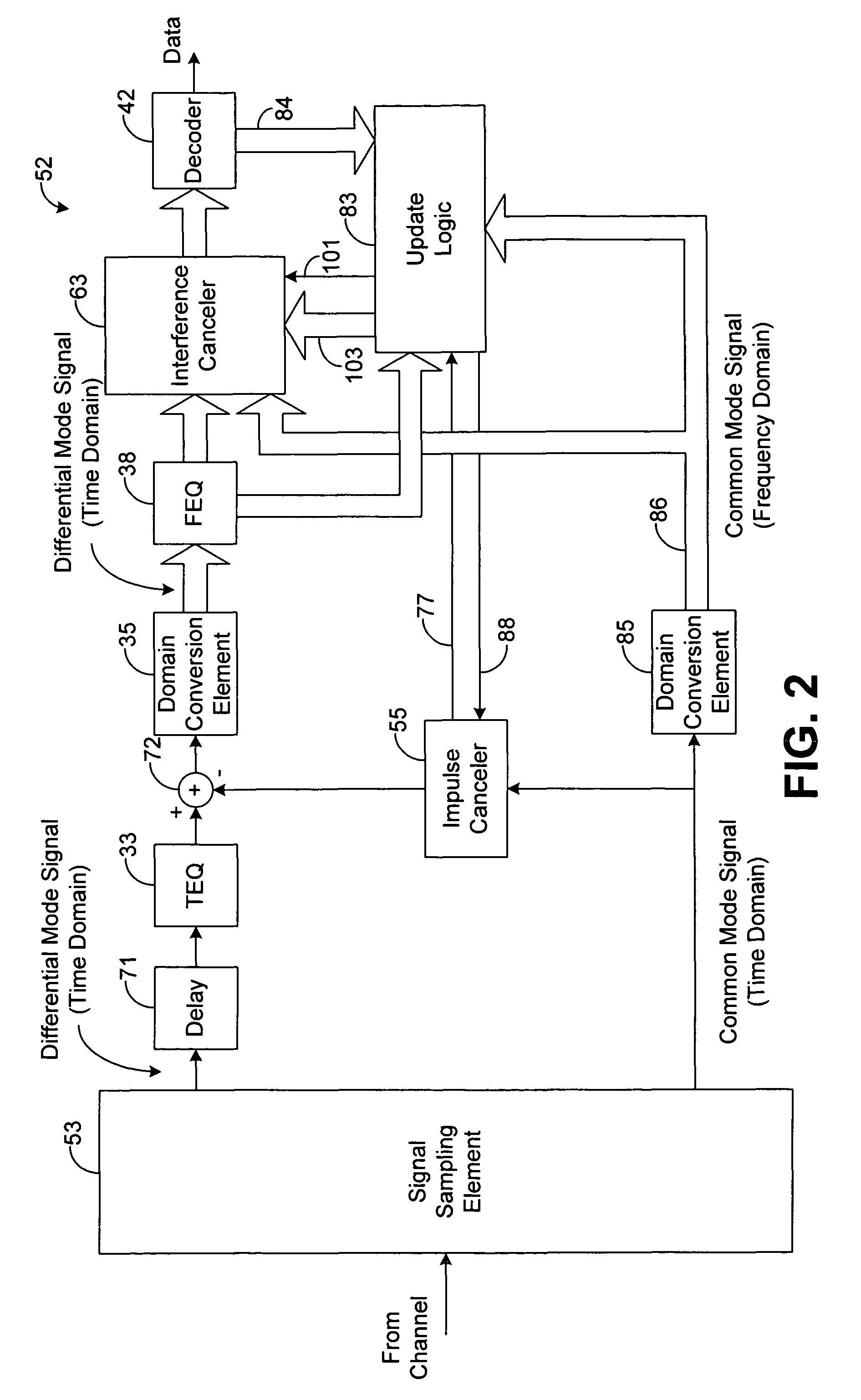Adaptive interference canceling system and method
a technology of interference cancelling and interference cancelling, applied in the field of adaptive interference canceling system and method, can solve the problems of limiting the overall speed at which data can be successfully communicated over the telecommunication line, data bits corrupted by impulse noise bursts cannot normally be recovered merely using conventional filtering techniques, and the effect of affecting the overall speed at which data can be successfully communicated
- Summary
- Abstract
- Description
- Claims
- Application Information
AI Technical Summary
Problems solved by technology
Method used
Image
Examples
Embodiment Construction
[0015]Embodiments of the present disclosure generally pertain to systems and methods for adaptively canceling noise and / or interference from signals communicated through a communication channel, such as signals communicated by a telecommunication network. A system in accordance with one exemplary embodiment of the present disclosure, based on a common mode signal of a received signal, generates an estimate of noise or interference within a differential mode signal of the received signal. The system then subtracts the estimate from the differential mode signal in an effort to remove noise from the differential mode signal thereby providing a differential mode signal that is substantially free of the estimated noise or interference.
[0016]FIG. 1 shows a conventional communication system 15 employing a discrete multi-tone (DMT) transmitter 17 and a DMT receiver 19 communicating over a communication channel 22, such as an unshielded twisted pair (UTP). The DMT transmitter 17 encodes a si...
PUM
 Login to View More
Login to View More Abstract
Description
Claims
Application Information
 Login to View More
Login to View More - R&D
- Intellectual Property
- Life Sciences
- Materials
- Tech Scout
- Unparalleled Data Quality
- Higher Quality Content
- 60% Fewer Hallucinations
Browse by: Latest US Patents, China's latest patents, Technical Efficacy Thesaurus, Application Domain, Technology Topic, Popular Technical Reports.
© 2025 PatSnap. All rights reserved.Legal|Privacy policy|Modern Slavery Act Transparency Statement|Sitemap|About US| Contact US: help@patsnap.com



